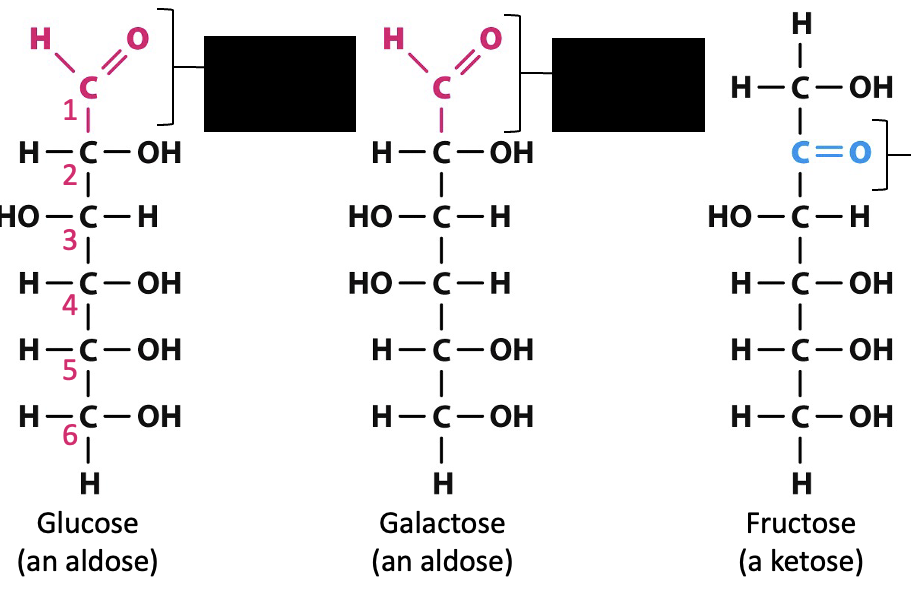b6 carbs
1/11
There's no tags or description
Looks like no tags are added yet.
Name | Mastery | Learn | Test | Matching | Spaced |
|---|
No study sessions yet.
12 Terms
carbohydrates for energy
strorage: starch
immediate use: glucose, fructose
carbohydrates for structure
cell walls: cellulose
exoskeleton: chitin in insects
organic molecules: part of the backbone of nucleic acids
carbohydrates for biological specificity
glucoseproteins: blood types
glycolipids: receptors fro bacterial and viral invasion

carbohydrates structure
hydrocarbon chain, ketone group, aldehyde group
in a cell would we find glucose in the linear, alpha ring, or beta ring structure
they move spontaneously between the three forms
some polymers of glucose are made of alpha rings (starch) and others (cellulose) are made of beta rings. How does a cell control that specificity of polysaccharide assembly?
enzymes; the specificity of active sites means that an enzyme is specific for the sugar it uses in anabolic reactions to build polysaccharides
how would we draw a Gibbs free energy graph for the reactions that shift the structure between linear, alpha ring, or beta ring structures
all with same G and almost no activation energy hurdles for transition states
polysaccharides 1A
starch (energy storage in plant cells), alpha 1,4-glycosidic linkage, unbranched and branched helix amylopectin
polysaccharides 1B
glycogen (energy storage in animal cells), alpha 1, 4- glycosidic linkage, highly branded helices caused by alpha 1-6 glycosidic bonds
polysaccharides 2A
cellulose (energy storage in animal cells), beta 1,4 glycosidic linkage, parallel strands joined by hydrogen bonds
polysaccharides 2B
chitin (structural support), parallel strands joined by hydrogen bonds
peptidoglycan (structural support), perpendicular strands joined by peptide bonds
polysaccharides 3
glycoprotein in plasma membrane of red blood cells
same protein but different sugar giving specificity
communication and recognition